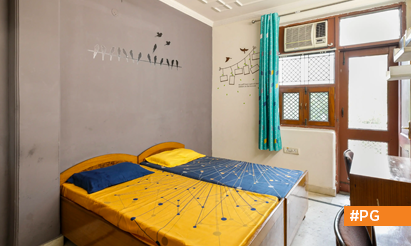Disadvantages of Mobile Towers Near Houses in India
In the era of ubiquitous connectivity, mobile towers have become an integral part of our lives, facilitating seamless communication. However, the placement of these towers near residential areas has sparked concerns about potential disadvantages. In this comprehensive exploration, we delve into the various aspects of why having mobile towers near houses might be a cause for worry, considering the Indian context. From health concerns to property values, we’ll uncover the potential downsides and the need for a balanced approach.
- Electromagnetic Radiation and Health Concerns:
One of the primary concerns associated with mobile towers near houses is the exposure to electromagnetic radiation. While numerous studies have been conducted globally, exploring the health impacts of prolonged exposure to such radiation, there is ongoing debate about the conclusive evidence. We’ll delve into the available data and scientific findings to provide a nuanced understanding of the potential health risks.
- Impact on Children and Vulnerable Populations:
Children and pregnant women are often considered more vulnerable to the potential effects of electromagnetic radiation. We will explore research findings that shed light on how proximity to mobile towers may affect the health of children and other vulnerable populations.
- Property Values and Real Estate Impact:
The presence of mobile towers near residential areas can have an impact on property values. Homebuyers may express concerns about potential health risks, leading to a decrease in property demand and, consequently, property values. We will analyze real estate trends and expert opinions to understand the implications on property markets.
- Community Concerns and Public Perception:
The placement of mobile towers often sparks community concerns and resistance from residents. Public perception plays a crucial role in the acceptance or rejection of mobile towers in residential areas. We’ll explore case studies and examples to illustrate the varied reactions and sentiments within Indian communities.
- Regulatory Framework and Guidelines:
To address concerns related to mobile towers, regulatory bodies in India have established guidelines to govern their installation and operation. We will delve into the existing regulatory framework, discussing the norms set by authorities to safeguard public health and ensure responsible deployment of mobile towers.
- Technological Advancements and Mitigation Measures:
Technological advancements in the telecommunication industry have led to the development of measures aimed at minimizing the impact of mobile towers on nearby residents. We will explore the innovative solutions and best practices adopted globally and within India to mitigate the potential disadvantages.
- Community Engagement and Awareness Programs:
Effective communication and community engagement are crucial in addressing concerns related to mobile towers. We will discuss the role of awareness programs, community dialogues, and transparent communication in fostering understanding and acceptance within local communities.
- Global Perspectives on Mobile Tower Placement:
Drawing on global experiences, we will examine how other countries have approached the issue of mobile tower placement near residential areas. By comparing international practices, we can gain insights into alternative approaches and potential solutions.
- Legal Recourse and Resident Rights:
Residents concerned about the presence of mobile towers in their vicinity may seek legal recourse. We will explore the legal aspects, resident rights, and the avenues available for those looking to voice their concerns or take action against the installation of mobile towers.
- Conclusion: Striking a Balance for Sustainable Connectivity:
In conclusion, the disadvantages of mobile towers near houses in India involve multifaceted considerations, including health concerns, property values, and community perceptions. While acknowledging the potential risks, it is essential to recognize the importance of mobile connectivity in our daily lives. Striking a balance between technological advancement, public health, and community well-being is crucial for fostering sustainable development in the realm of telecommunications.




